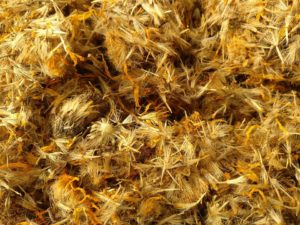Arnica (Arnica spp.) is a much-loved medicinal herb. It has been in use for thousands of years. Herbalists make ointments with the flowers. They use the ointments to treat bruises, pain from arthritis, and sprains. Ingestion of the plants is not recommended. Arnica contains the toxin helenalin. In large doses it can cause muscle paralysis, gastroenteritis, and cardiac and liver damage. Applied to the skin, it can cause dermatitis in some people. You should always wear gloves while handling the plants.
Arnica species are related to sunflowers and native to Eurasia and North America. Some species even grow in the arctic. As a whole, the genus is hardy in zones 1 through 9. They are all perennials. They grow best in full sun but will tolerate some shade. In warmer regions, the plants need a little shade in the afternoons. They reach heights of 12 inches. Bloom time is May and June.
Arnica propagates by both seeds and underground runners or rhizomes. You can divide the plants or grow from seed.
To grow from seed, you can either direct sow in your garden in the fall or start the seeds indoors 4 to 6 weeks before your last frost. Soak the seeds before planting. Gently press them into pre-moistened soil but don’t cover them. They need light to germinate. If planting indoors, they will need to be cold stratified. Cover the container and place it in your refrigerator for 8 to 10 weeks to simulate cold winter weather. After you remove the container from your refrigerator, germination should occur within 4 weeks.

Dried arnica flowers
The seedlings can be planted in your garden after your last frost. Space them 6 to 12 inches apart.
If you wish to use the flowers medicinally, harvest them before they are fully open and dry them in a single layer somewhere that is dark and well-ventilated. Use them as soon as they are dried. The dried flowers do not keep well and tend to attract insects.

